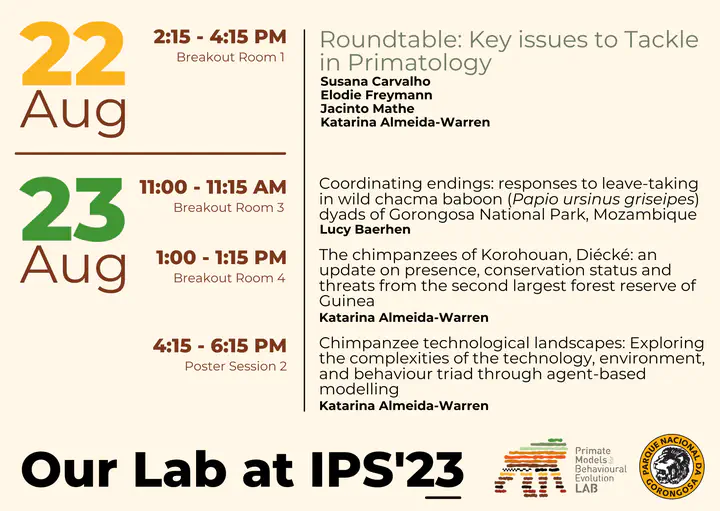The chimpanzees of Korohouan, Diécké: an update on presence, conservation status and threats from the second largest forest reserve of Guinea
 Image credit: K. Almeida-Warren
Image credit: K. Almeida-WarrenAbstract
The Diécké Forest is the second largest classified forest in Guinea and home to a population of nut-cracking chimpanzees (Pan troglodytes verus). It has attracted several research expeditions focusing on chimpanzee presence and tool use since 1993. However, due to political instability in 2008 followed by the Ebola outbreak of 2013, research efforts in the region ceased for nearly a decade. We visited Diécké in November 2018 to review the status of chimpanzee presence and nut-cracking activity in the Korohouan area, where research on chimpanzee nut-cracking has previously been conducted. We report our findings along with an up-to-date overview of the historical, socio-political, environmental, and scientific developments around the Diécké Forest. We found that the chimpanzee presence in the area continues to decline with no recent evidence of nut-cracking or other activities. We also found that hunting was one of the major threats to wildlife, but small-scale agriculture, as well as commercial activities such as rubber and palm oil production, are also having an impact on forest fragments outside the protected area. Rich in a range of highly sought-after natural resources, such as timber, metals, and fertile land, industrial operations in the Diécké region continue to escalate. Local activists, media, and NGO reports indicate that this will have damaging consequences to livelihoods and wildlife. Our study highlights the need for concerted conservation and human development action and provides an important case study on the disappearing cultural heritage of a chimpanzee population in decline.